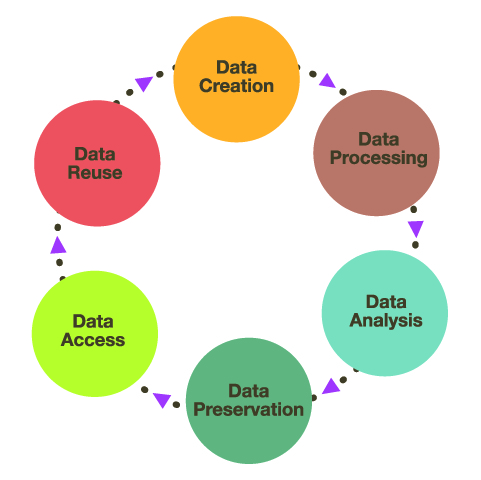- Library
- Research Guides
- Research Data Management
- What is Research Data Management?
Research Data Management
What is Research Data Management?
Research data management (RDM) is the effective storage, access, and preservation of research data that is often required by funding agencies. It involves planning, file naming and formatting, following metadata standards, data storage, and legal and ethical considerations. RDM is essential in continuing the data lifecycle because it enables individuals to access and reuse the data sets created by other researchers.

The Data Lifecycle
Image courtesy of NTU Libraries Blog
Curious about current RDM practices in Canada? Take a look at these publications detailing RDM practices at many academic libraries:
- Cheung, M., Cooper, A., Dearborn, D., Hill, E., & Johnson, E. (2022). Practices Before Policy: Research Data Management Behaviours in Canada. Partnership: The Canadian Journal of Library and Information Practice and Research, 17(1): 1-80, doi:10.21083/partnership.v17i1.6779.
- Ho, R. C. Y., Wong, S. N., Chia, P., Tang, C., & Ng, M. T. T. (2025). Research data management services in academic libraries to support the research data life cycle: A systematic review. Journal of the Association for Information Science and Technology. https://doi.org/10.1002/asi.70008
Introductory Glossary
Research Data Management (RDM)
RDM refers to the processes applied throughout the lifecycle of a research project to guide the collection, documentation, storage, sharing, and preservation of research data.
Data Lifecycle
Refers to all the stages in the existence of digital information from creation to destruction. A lifecycle view is used to enable active management of the data objects and resources over time, thus maintaining accessibility and usability.
Data Stewardship
“The process of Data Stewardship involves ensuring effective control and use of data assets and can include creating and managing metadata, applying standards, managing data quality and integrity, and additional data governance activities related to data curation. It also may include creating educational materials, policies, and guidelines around data at an institution.”

